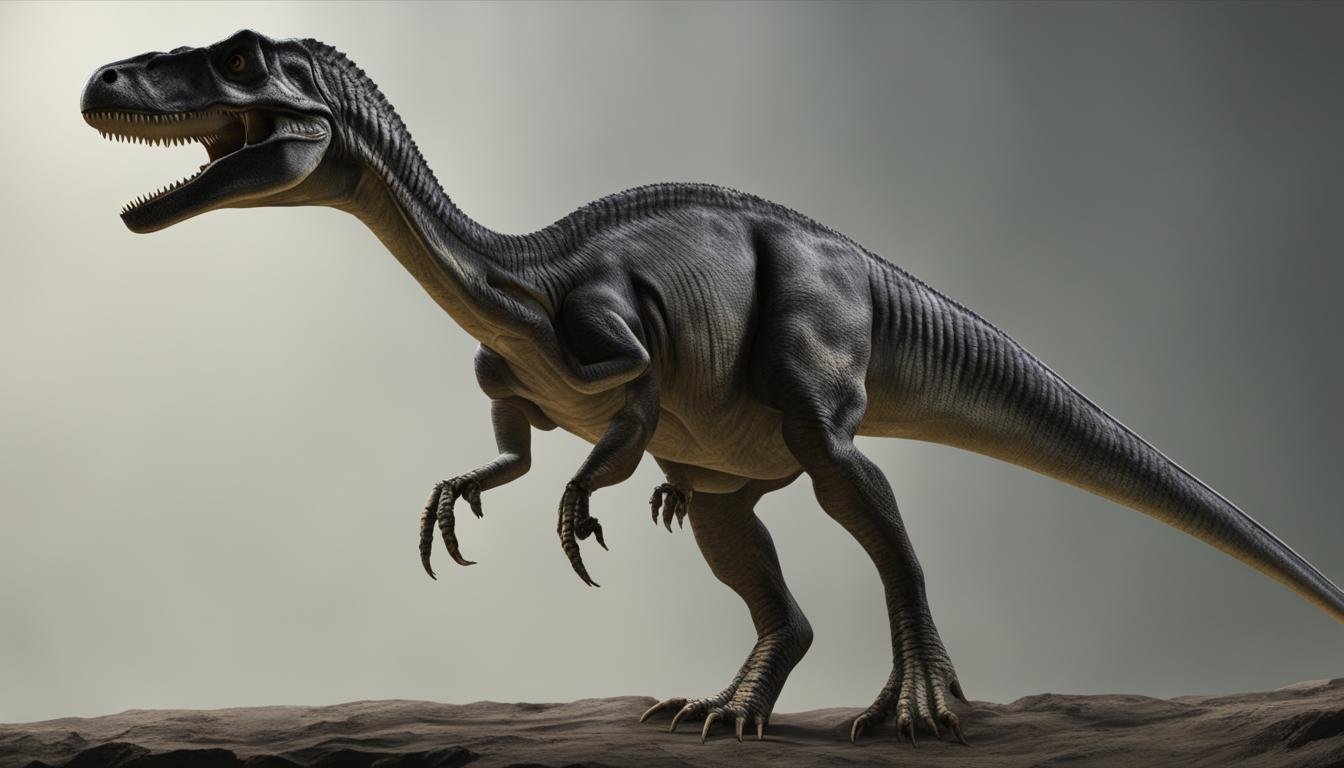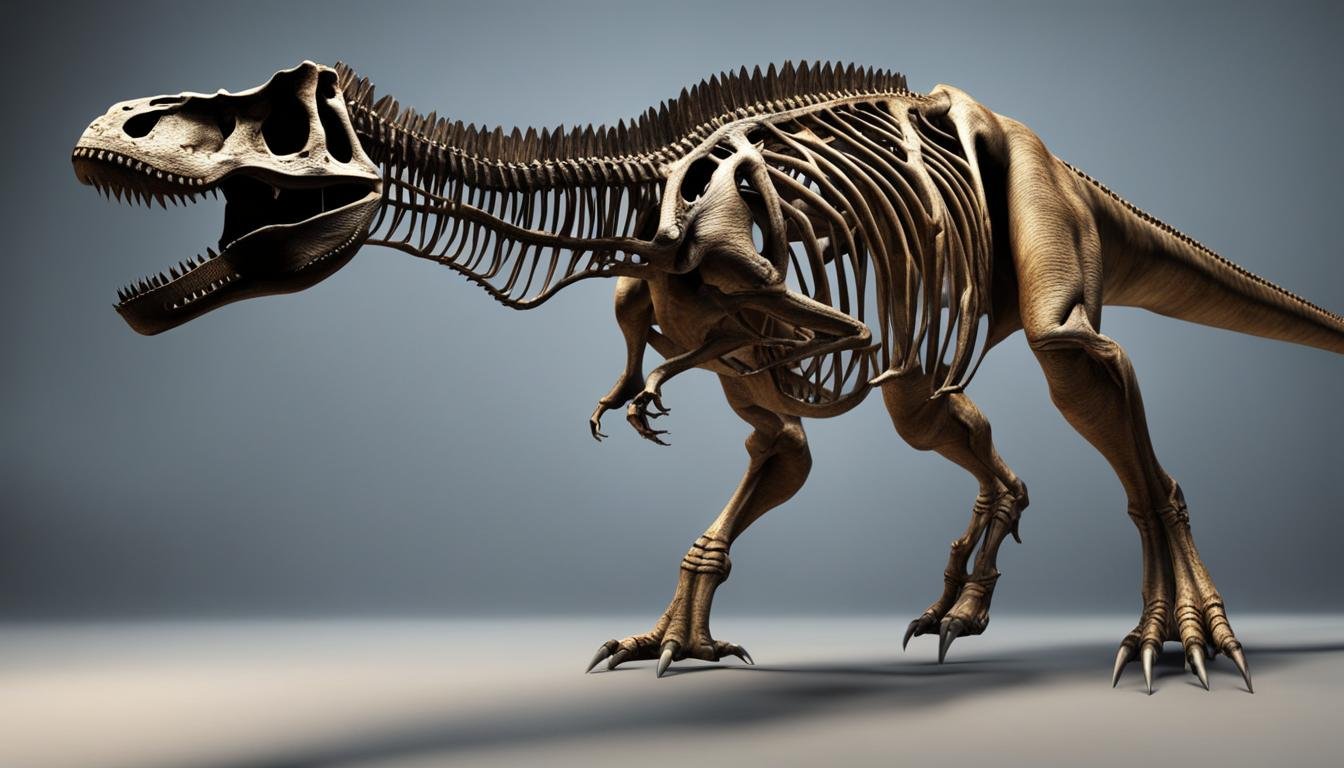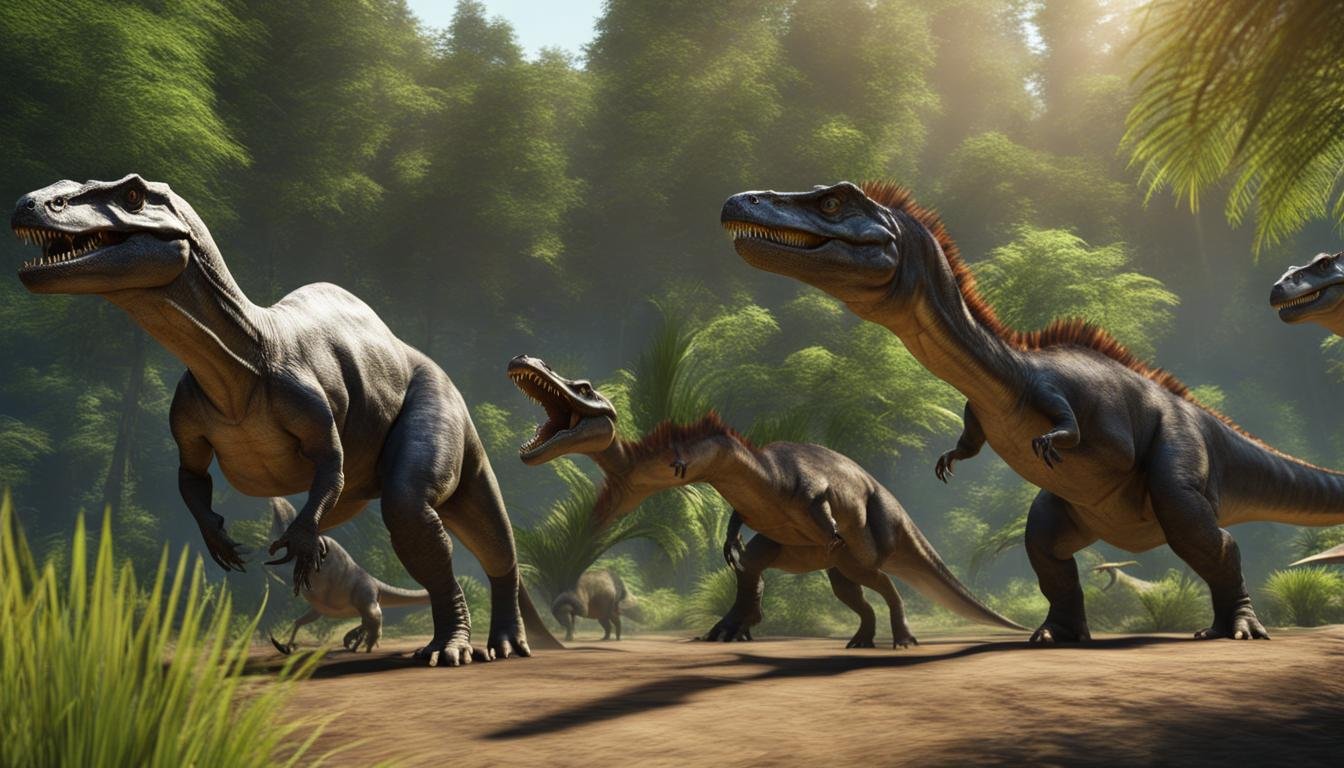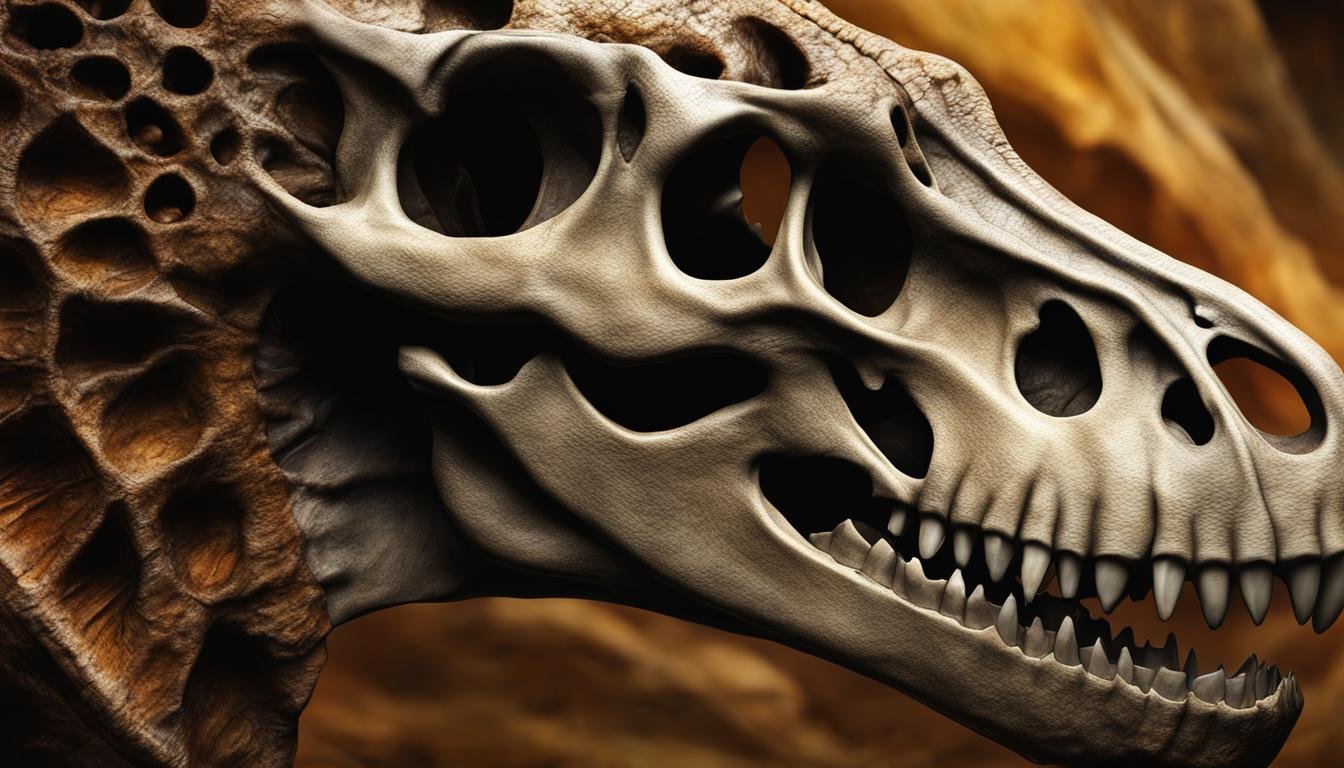Peering into the depths of prehistoric times, the study of dinosaur bone structure analysis serves as a captivating portal, offering incredible insights into a world dominated by colossal beings. The fascinating endeavor to understand these ancient creatures pivots largely on the study of fossils, particularly dinosaur specimens that have stood the test of time. Through meticulous examination and modern scientific methods, paleontologists provide a narrative that connects us across millions of years to the very fabric of life that once thrived on our planet.
Advancements in dinosaur bone structure analysis have not only enriched our comprehension of these magnificent beasts but have also refined our theories regarding their behavior, environment, and eventual extinction. Every fossilized bone unearthed is a chapter out of Earth’s dramatic history book, waiting to be deciphered. This cornerstone of paleontological research continues to evolve, relentlessly revealing the secrets locked within the ancient remains.
Key Takeaways:
- Dinosaur bone structure analysis unveils the behaviors and environments of ancient life forms.
- The study of fossils, particularly well-preserved dinosaur specimens, is critical in paleontology.
- Emerging technologies and methods are constantly advancing our understanding of prehistoric life.
- Each dinosaur discovery adds a valuable piece to the puzzle of Earth’s biological history.
- Fossils act as historical documents, providing evidence of life from millions of years ago.
Unearthing the Bones: The Discovery of Dinosaur Fossils
The quest to discover dinosaur fossils is as thrilling as it is intricate. It begins with the tantalizing prospect of unearthing dinosaur bones that have been concealed for eons beneath layers of earth and stone. Each find contributes a new piece to the ever-expanding jigsaw of prehistoric life. So, what does it take to excavate these precious relics from the past?
Paleontologists, the detectives of prehistory, play a central role in locating and excavating these fossils. With patience and precision, they transport us back to the Mesozoic era with each groundbreaking discovery. Equipped with an array of tools – from shovels and brushes to the latest geophysical technology – they delicately extract the fossils from their ancient resting places.
The importance of finding well-preserved fossils cannot be understated. These specimens unlock untold stories of dinosaur evolution and diversity, allowing us to piece together the puzzle of our planet’s distant past. Let’s take a closer look at some of the most influential finds and the tools that made these discoveries possible.
- Digging Tools: Trowels, shovels, and picks chisel away at the Earth’s layers to reveal hidden fossils.
- Mapping Technology: Ground-penetrating radar and GPS aid paleontologists in pinpointing the most promising dig sites.
- Cleaning Equipment: Miniature jackhammers and fine brushes are used to remove the surrounding matrix without damaging the bones.
- Preservation Materials: Once extracted, bones are encased in plaster and transported to laboratories for further study.
In the annals of paleontology, there have been several milestone moments that have enriched our understanding of these ancient titans:
| Discovery | Location | Impact on Science |
|---|---|---|
| Tyrannosaurus Rex | Montana, USA | Shed light on the structure and potential behavior of theropod dinosaurs. |
| Velociraptor | Mongolia | Provided evidence of the link between dinosaurs and birds. |
| Argentinosaurus | Argentina | Revealed insights into the life of some of the largest creatures ever to walk the Earth. |
Every discovery of dinosaur fossils is a testament to the timelessness of our natural world and the continued curiosity that drives us to explore it. As we unearth these ancient treasures, we pave the way for future generations to marvel at the grandeur of life’s evolutionary tapestry.
Breaking Down the Bone: Composition and Microstructure
Investigating the fundamentals of what composes dinosaur bones and how they compare to the bones of modern species opens a fascinating chapter in paleontology. Analyses of bone tissue shed light on the stark contrasts and curious similarities between past and present life forms, illuminating the evolutionary narrative of vertebrates.
Comparative Analysis: Dinosaur vs. Modern Bone Tissue
When assessing the differences between dinosaur bone vs. modern bone, we delve into a realm where nuanced biological histories are encoded in the very matter of these remains. Through bone tissue analysis, scientists can discern the microscopic architecture and explore how the composition of dinosaur bones speaks to the physiology and adaptability of these ancient reptiles.
- **Bone Density:** Reveals insights into the metabolism and lifestyle of dinosaurs, contrasting with modern birds and mammals.
- **Vascular Structures:** The size and distribution of blood vessels within the bone can indicate growth rates and biological demands.
- **Microstructure:** Examines the fibrous and cellular matrix of bones, offering clues into the repair and growth mechanisms of dinosaurian skeletons.
Decoding the Fossilization Process: Bone Tissue to Stone
The transformation of once-living bone tissue into mineralized fossils is a story of remarkable conditions and immense spans of time. The fossilization process involves a series of geological events leading to the preservation of fossils. By understanding how bone tissue fossilization occurs, we begin to appreciate the rarity and value of each fossilized bone.
Essential factors in the fossilization of bone include:
- **Rapid Burial:** To limit decomposition and preserve structure, rapid covering by sediment is crucial.
- **Mineral-Rich Waters:** Groundwater percolates, depositing minerals that replace the organic components.
- **Pressure and Time:** Over millennia, the gradual application of pressure solidifies the transition from bone to stone.
Traces of Life: Organic Material in Fossilized Bones
Recent exciting discoveries have revealed that some fossilized bones hold more than just the shape of ancient life—they contain remnants of actual organic material in bones. Such materials may include collagen fibers or even blood vessel imprints, suggesting that these entities are much more than inanimate stones. Given the right preservation conditions, scientists can find traces of life lain undisturbed for millions of years.
The implications of finding ancient organic material in dinosaur bones are vast, yielding unprecedented insights into their biochemistry and potential for soft tissue analysis. Still debated and meticulously studied, these findings kindle a spark of wonder about the limits of dinosaur bone preservation.
| Element Found | Implications | Occurrences |
|---|---|---|
| Collagen | Suggests the possibility for molecular comparison with modern species. | Occasionally identified in exceptionally preserved specimens. |
| Blood Vessels | Preserved vessels can indicate soft tissues which can provide information on physiology. | Rare, often requiring specific preservation conditions. |
| Cellular Structures | Cell remnants can unveil growth and repair processes in dinosaurs. | Seen in some bone fragments under electron microscopy. |
Fossilization is a rare event, and every opportunity to uncover a piece of the past enriches our understanding of the ecological tapestry that has shaped our modern world. As we continue to break down the composition and investigate the microstructure of dinosaur bones, we weave a closer connection to these remarkable organisms that once roamed the Earth.
The Role of Museums: Curating Dinosaur Specimens for Study
The preservation and curation of dinosaur specimens by museums of natural history play a pivotal role in bringing prehistoric worlds to contemporary audiences. Not only do these institutions safeguard the remnants of ancient life, but they also facilitate rigorous scientific research and offer educational programs that ignite the public’s fascination with dinosaurs. The meticulous work of curating fossils within museum collections ensures that each specimen can be studied and appreciated for generations to come.
Renowned institutions like the American Museum of Natural History and the Smithsonian’s National Museum of Natural History are at the forefront of this endeavor. They house some of the most extensive and significant collections of dinosaur fossils in the world, operating as both research centers and public showcases of paleontological wonders.
Collaborative Efforts in Advancing Paleontology
The synergy between museums and the scientific community is essential for expanding our understanding of prehistoric life. Paleontologists often rely on museum collections to hypothesize and test theories about dinosaur biology and evolution. Concurrently, discoveries from the field can lead to transformative museum exhibits that exemplify the latest in paleontological thought.
- **Loan Programs:** Museums facilitate academic study by providing access to their collections, allowing researchers worldwide to examine rare specimens up close.
- **Public Education:** Educational programs and interactive displays translate complex scientific data into relatable knowledge, sparking interest in natural history among visitors of all ages.
- **Exhibit Curation:** Museums create dynamic and scientifically accurate exhibits, offering visitors a glimpse into the life of dinosaurs through reconstructed skeletons and lifelike models.
Behind the scenes, the work that goes into curating a single fossil specimen can be quite extensive, involving preparation, preservation, and a detailed cataloging process. It is through these careful practices that museums are able to preserve the integrity of fossils and make them available for both research and display.
| Curatorial Activity | Purpose | Outcome |
|---|---|---|
| Preparation | To remove the surrounding matrix and stabilize fossils for study and exhibition. | Articulated specimens that can be analyzed or displayed. |
| Documentation | To catalog and record details about the specimen’s provenance, condition, and scientific significance. | A comprehensive database for academic reference and tracking. |
| Conservation | To apply methods that prevent or slow the degradation of fossils. | Long-term preservation of fossils for future generations. |
| Research Access | To provide materials for scientific study via loans or in-house work. | Advancements in paleontological research and publications. |
| Public Engagement | To create exhibits and educational content that conveys the story of the specimens. | Informed and inspired museum visitors. |
Museums of natural history serve as guardians of our planet’s biological heritage. Through the careful curating of dinosaur specimens, they nurture a deep connection between the past and the future, allowing us to experience the wonder of prehistoric life in tangible, meaningful ways.
Dino DNA: What Bone Samples Reveal about Prehistoric Life
The extraction of dinosaur DNA from bone samples stands at the forefront of paleontological research, presenting a revolutionary tool for unraveling the mysteries of non-avian dinosaur lifestyles. The complexity of the molecules extracted from these ancient remains offers a direct glance into the genetic make-up of these formidable creatures, which roamed the Earth millions of years ago. However, this cutting-edge research comes with its own set of challenges and limitations, as the ravages of time often degrade the delicate genetic material within fossils.
From Structure to Behavior: Insights into Non-Avian Dinosaur Lifestyles
By analyzing bone samples, scientists can obtain valuable insights from bone analysis that breathe new life into our understanding of these colossal beings. Far from the limitations of mere bone structure, we guide our focus toward intricate details of their biology and ecology – how they grew, what they ate, and how they behaved. Unveiling the nuances of dinosaur lifestyles enables us to paint a more vivid picture of their existence, bringing the fossils beyond their stone encasements and into a dynamic past teeming with life.
- Genetics: DNA sequencing can identify specific genes that influenced dinosaur development and adaptations.
- Growth Patterns: Examination of bone growth rings can reveal the pace of growth and developmental stages of dinosaurs.
- Behavioral Attributes: Studying bone pathologies and certain isotopic signatures can infer social behavior and dietary habits.
Advances in technology have opened up opportunities to glimpse into the genetic codes that orchestrated the lives of dinosaurs. Yet, it is integral to remain mindful of the constraints that accompany the exhilarating endeavor of decoding dinosaur DNA. Despite exceptional cases, most DNA degrades over time, leaving only the most robust elements, such as mitochondrial DNA or certain proteins, available for analysis.
| Bone Sample Source | Findings | Significance |
|---|---|---|
| Mitochondrial DNA | Yields clues on phylogenetics and ancestral lineages | Improves classification and understanding of relations among dinosaur species |
| Growth Rings | Indicates the speed and conditions of growth, similar to tree rings | Helps estimate age at death and seasonality effects on dinosaur biology |
| Isotopic Signatures | Can suggest dietary patterns and habitat use | Provides context on ecosystem dynamics and resource utilization |
Despite the intricate nature of extracting and interpreting the data from bone samples, break throughs continue to shape our perception of these ancient reptiles. From the meticulous steps of isolating insights from bone analysis to the broader implications they carry, each finding adds depth to the chronicles of Earth’s ancient inhabitants.
- The limitations of preservation over millions of years make intact dinosaur DNA a rarity, setting the stage for a meticulous detective work.
- Innovative techniques, such as mass spectrometry, enhance the ability to discern molecular compositions from bone samples.
- Through collaborative multidisciplinary efforts, findings in genetics, paleobiology, and geochemistry merge to reconstruct the lifestyles of non-avian dinosaurs.
As we unravel the stories captured within bone samples, the grand narrative of non-avian dinosaur lifestyles becomes ever more tangible. The pursuit of knowledge embedded in prehistoric remains continues to challenge and inspire scientists, promising a future rich with discoveries waiting to be unearthed and shared with a world eager to connect with its ancient past.
Conclusion: The Enlightening Journey of Dinosaur Bone Analysis
As we stand at the precipice of scientific discovery, insights from dinosaur bone analysis continue to enlighten us, elevating our understanding of prehistoric life to unprecedented heights. The rich tapestry of knowledge we’ve acquired is the culmination of paleontological research, a journey that has been carved through centuries of ardent study, innovative technology, and profound curiosity. By peering into the past, we have gleaned invaluable information about dinosaur physiology, behaviors, and ecosystems, bridging the vast chasm between their era and ours.
The current state of paleontological research is robust and brimming with potential. With each passing day, emergent technologies and refined methods promise a future of bone analysis that can unlock even more secrets of Earth’s former rulers. This constant evolution heralds a new age of discovery, where the remnants of dinosaurs serve not merely as relics of antiquity, but as dynamic reservoirs of ancient tales eagerly awaiting to be told. The bones of these awe-inspiring creatures, millions of years old, persist as sentinels that offer us a glimpse of life’s tenacity and evolution.
In closing, the journey through the ages afforded by dinosaur bone structure analysis inspires us to look forward with anticipation to the continued advancements in this field. Each fossil, each bone sample analyzed, fuels the narrative of Earth’s history, encouraging us to explore further and dig deeper into the foundations of life itself. The future of bone analysis is bright, resplendent with the promise of forthcoming revelations that will further illuminate the prehistoric world and its remarkable inhabitants.









